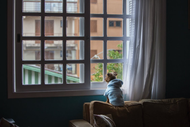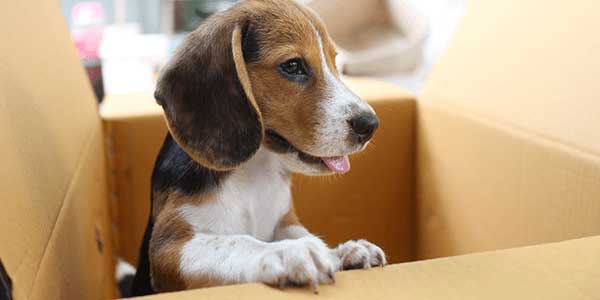Navigating Canine Independence: A Guide to Leaving Your Dog Home Alone
Feb 22, 2024
The thought of neglecting your adored canine buddy is an equally scary and daunting idea, requiring absolute discretion and caution.
Due to being social animals, dogs can feel anxious or bored when left alone. This manual aims to provide you with the knowledge and tactics required for success in your dog’s independence.
“Leaving your dog alone shouldn't always mean leaving them isolated.”
Then, we’ll cover important points to ensure that your four-legged friend remains happy and safe while you are away.
Understanding Canine Behavior
Before moving to the practicalities, it is important first understand your dog’s behaviour. Dogs are accustomed to predictability, so sudden changes unsettle them.
Ease it’s pet alone time gradually to make it adapt. Watch their responses carefully, looking for signs of anxiety or discomfort. This step is a prerequisite for a smooth change.
Establishing a Comfortable Environment
Comfort and safety for your dog should be a top priority. Make sure they have a water source, their favourite playthings and a quaint bed.
Consider purchasing puzzle toys that stimulate mental activity while you are away. A place designated as such can give an atmosphere of familiar belonging.
Structured Departures and Arrivals
An effective way to reduce the emotional impact of leaving and coming back is keeping departures understated. The less you make a big deal about it, the less likely an attack of anxiety is to occur. Also, come back with a calm face.
This method helps keep you aligned and thereby normalises your departures, arrivals and routines in such a way as to make the events stress-free.
Technology as a Companion
In the modern digital era, technology has the potential to play a key role in accompanying your dog. Pet cameras make it possible for you to keep an eye on your lively creature even when you are away, soothing preoccupations and providing comfort. Some also have two-way audio, which allows you to calm your pet remotely.
Regular Exercise and Mental Stimulation
A sleepy dog is a happy dog. Plant regular exercise first before leaving your pet alone. A quick walk or play can utilise the excess energy and thus help cut down destructive behaviour.
Mental enrichment is just as important; think of puzzle games or training sessions to keep your dog's brain busy.
Professional Assistance
If you do not have the time to periodically take a break from your work and check on the dog, then a professional pet sitter or dog walker can be hired.
These people are taught how to be company to your dog, and you can rest assured that they will take good care of him/her. On the part of the working pet parent, professional assistance might prove a beneficial investment.
Establishing a Routine
Routine is essential for dogs, and it is argued that a predictable daily routine can reduce their anxiety. Establish feeding, walking and playtime schedules.
This predictability gives your dog security, reinforcing the fact that you will be back at a predetermined time.
| Pro-Tip: Create a 'scent trail' by leaving a piece of clothing with your scent near your dog's bed or crate. Your scent can provide comfort and reassurance in your absence. |
Monitoring Health and Well-being
Regular veterinary checkups are essential for tracking your dog’s health status. And talk to your veterinarian about your pet’s behaviour and also discuss with him or her if you have any concerns.
Behavioural signs of certain health problems should be examined immediately and remaining proactive will ensure that all issues are dealt with in a timely manner.
Emergency Preparedness
Where unexpected situations occur, having a plan is necessary. Share the emergency contact information with a reliable neighbour or friend who can substitute if necessary.
Provide comprehensive directions regarding your dog’s daily routine, feeding preferences, and any medical needs.
Adapting to Separation Anxiety
Leaving your dog home alone involves a number of issues such as separation anxiety. The reason is that dogs are social animals; therefore, they feel anxious or stressed after detaching themselves from their owners.
Understanding the symptoms of separation anxiety is essential; these can include excessive barking, vandalism, or house training. To do so, begin with short intervals and build to longer periods.
Positive Reinforcement Techniques
Use positive reinforcement strategies to ensure that your leave takes on the positive connotation. Prior to departure, have a short play or training session with your dog where you reward calm behaviour.
In the same way, when they come back, reward them for their patience and restraint. This reinforcement helps change your dog’s perception correlating departures with good things.
Interactive Toys and Treats
Treat-dispensing toys and interactive devices are useful ways to combat boredom. The dog is kept busy and stimulated by these toys.
Consider filling the puzzle toy with treats before leaving, giving an outlet for your pet’s mental stimulation and a pleasant surprise as a reward.
Familiar Scents and Sounds
For association, keep an item with your scent somewhere near the dog. This may be a garment or a cover.
Moreover, playing soft background music or white noise drowns out any other sounds from outside so that in your absence the environment would be peaceful.
Socialization Opportunities
Sufficient socialisation is fundamental to a balanced dog. Organise play-dates with other dogs or offer your dog group training classes.
Socialisation not only improves your dog’s general behaviour but also impacts their capacity to adjust to different situations and therefore make being alone at home manageable.
Consistent Communication
While dogs do not speak human language, they can be trained through consistent forms of communication.
Develop a habit of saying short, comforting words or phrases before departure. This spoken signal can serve as a reassuring indication for your dog, indicating that you will come back.
Although keeping your dog at home may be daunting, thoughtfully planning can make it a mutually beneficial experience. Through proper understanding of the behaviour with your dog, providing a comfortable environment and using technological advances and professional help when necessary, you create the ideal path for having a cheerful independent canine friend.



